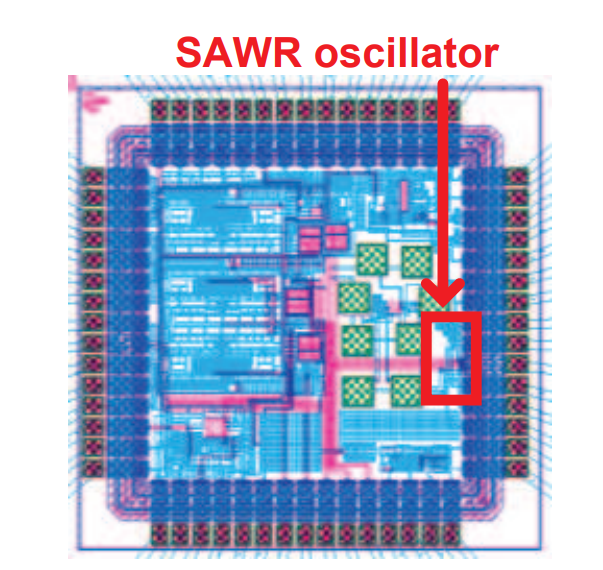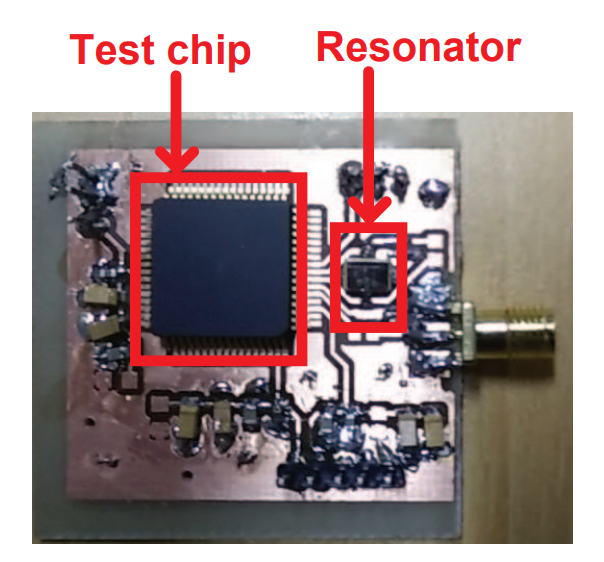This technology presents a low-power On-Off Keying (OOK) transmitter designed for health care applications operating in the MedRadio band (401–406 MHz). The system uses a Surface Acoustic Wave (SAW) resonator oscillator to generate a stable 403.5 MHz RF signal, eliminating the need for power-hungry frequency multipliers. An injection-locked LC oscillator modulates and transmits biological signals, where the SAWR oscillator enhances phase noise performance and frequency stability. The encoded biological signal itself powers the LC oscillator, further reducing energy consumption. A built-in impedance transformation network enables direct antenna drive without external amplifiers. The transmitter achieves data rates up to 200 kbps while complying with MedRadio spectral mask and power regulations, making it suitable for compact, implantable, or wearable medical monitoring systems.
Health monitoring systems that transmit biological signals wirelessly often face two major issues: high power consumption and bulky design. Existing Radio Frequency (RF) transmitters used in implantable sensors require significant energy to generate stable frequencies and are not optimized for safe, long-term use inside the human body. The need for low-power, compact transmitters that comply with safety standards (like MedRadio's 25 µW EIRP limit) is urgent, especially for real-time remote patient monitoring.
- Stable Carrier Signal Generation: The system uses a Surface Acoustic Wave (SAW) resonator oscillator to generate a stable 400 MHz carrier signal with very low power consumption.
- Biological Signal Modulation: An LC oscillator is used to receive biological signals from the patient and modulate them using On-Off Keying (OOK).
- Signal Stability through Injection Locking: The SAW oscillator injection-locks the LC oscillator, ensuring signal stability without requiring complex circuitry.
- Self-Powered Oscillation: The encoded biological data powers the LC oscillator directly, eliminating the need for a separate power supply.
- Efficient Antenna Drive: The transmitter includes an Impedance Transformation Network (ITN) that drives a compact antenna without the need for an external power amplifier.
- Compliance with MedRadio Standards: The entire system is designed to comply with the MedRadio safety standard, maintaining an Effective Isotropic Radiated Power (EIRP) of just 25 µW.
- Minimalistic and Low-Power Design: The simplified design reduces the number of components, conserves power, and minimizes electromagnetic radiation.
The prototype features a SAW resonator oscillator generating a stable 400 MHz carrier signal, with injection-locked LC oscillator performing OOK modulation. The biological signal powers the LC oscillator, minimizing energy use. An integrated ITN drives a differential antenna without external amplifiers. The system achieves 200 kbps data transmission, complies with MedRadio standards, and has been validated for phase noise and frequency stability. Compact and energy-efficient, it suits implantable or portable health monitoring devices.
A working design has been developed and validated. Simulations and measurements show successful signal transmission at 200 kbps, with the system meeting spectral mask requirements. It operates at the MedRadio band (401–406 MHz) and maintains signal integrity with minimal power use.
4
This innovation enables real-time, wireless health monitoring for patients using safe, implantable transmitters. It enhances remote diagnostics, reduces hospital visits, and supports proactive healthcare by transmitting real-time data to doctors.
- Wireless medical devices, especially implantable and wearable health monitors
- Implantable biomedical sensors
- Remote health monitoring
- Wearable Health Tech
- Internet of Medical Things (IoMT)
Geography of IP
Type of IP
201621000639
381814


